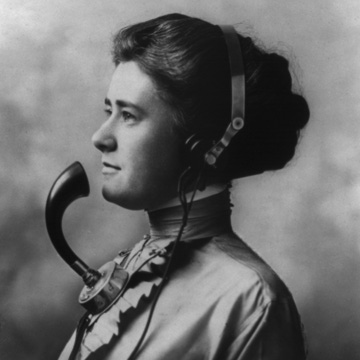
5G is all the rage right now among mobile network operators, with executives across the globe touting the new technology's capabilities and performance.
But it's not yet clear whether 5G will be able to live up to the standard set by its predecessors, particularly 2G.
Indeed, 2G is now entering its fourth decade of service in some parts of the world. First launched in the early 1990s, a number of mobile network operators across the globe today report no plans to shutter the technology even as they close down their newer 3G networks.
"You can continue to make calls via the 2G network after the 3G switch-off," noted Vodafone in Germany of its new plans to shutter 3G.
"Subscribers will be able to use voice and SMS services via the 2G network, which will continue to operate," wrote Cosmote in Greece of its 3G shutdown plans.
And according to Reuters, EE owner BT in the UK will phase out 3G during the next two years, but plans to keep 2G around until sometime later this decade.
A case-by-case basis
But other global operators aren't as supportive of 2G as Vodafone, Cosmote and BT. For example, 3 Hong Kong said it will shutter its 2G network later this year.
The 2G situation in the US helps to highlight how operators are taking a mixed approach to the technology. AT&T, for example, shuttered its 2G network in 2017, and plans to end its 3G network next year. T-Mobile, meanwhile, plans to shutter both its GSM 2G and UMTS 3G networks sometime in the future, "but no date has been set." That's noteworthy considering T-Mobile is in the process of shuttering the 3G and 4G networks it acquired from Sprint over the next 12 months.
Nonetheless, 2G remains firmly in place for a number of operators across the globe.
"In the developing and less-developed nations, 3G will generally be switched off before 2G," wrote Zahid Ghadialy, an analyst and executive with Parallel Wireless, on his blog in 2017. "The main reason being that there are still a lot of feature phone users that rely on 2G technologies. Most, if not all, 3G phones support 2G so the existing 3G users will be forced onto 2G. Those who can afford, will upgrade to newer smartphones while those who can't will have to grudgingly use 2G or change operators."
Today, Ghadialy maintains a running tally on Twitter of the operators around the world that are shutting down – or maintaining – their 2G and 3G networks.
"The Dutch operator KPN announced that they are switching off 3G. Last sites will be switched off by 31 March 2022. After that users will fall back to 2G," he wrote in July. "2G will be around until at least April 2025."
Legacy IoT
Analyst John Byrne with GlobalData explained that some European operators are sticking with 2G due to their legacy Internet of Things (IoT) businesses.
"US operators have actually been more proactive in shutting down 2G and are now focusing on 3G. European operators have been doing things in reverse – taking steps to shut down 3G but keeping 2G, largely to support legacy IoT deployments," he wrote in response to questions from Light Reading.
And part of that is due to the capabilities of 2G, according to analyst Joe Madden of Mobile Experts.
"2G is still useful because the FM modulation (like the stereo in the car) travels a long distance," Madden wrote in response to questions from Light Reading. "There are millions of IoT devices that use 2G (example: a coke machine in the basement of the college dorm) where no other signal can penetrate. 3G and LTE are not really a good substitute, although NB-IoT is now able to replace GSM with similar long-range characteristics."
He continued: "On the other hand, 3G uses spread-spectrum technology, which limits the range somewhat but increases the capacity. Unfortunately, 3G is not as efficient as 4G or 5G when it comes to capacity, so 3G is not useful any more."
But Byrne, with GlobalData, cautioned that users shouldn't get too attached to 2G in the hopes it will stick around indefinitely.
"All of this has to do with freeing up spectrum for LTE and 5G but 3G is an easier place to start because of the smaller installed base," he wrote. "Ultimately 2G is doomed in most of these countries too, probably by the end of the decade."
Related posts:
— Mike Dano, Editorial Director, 5G & Mobile Strategies, Light Reading | @mikeddano
About the Author(s)
You May Also Like











